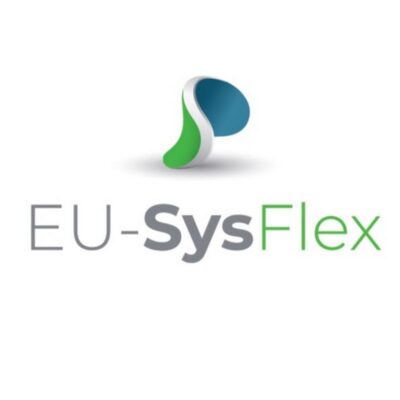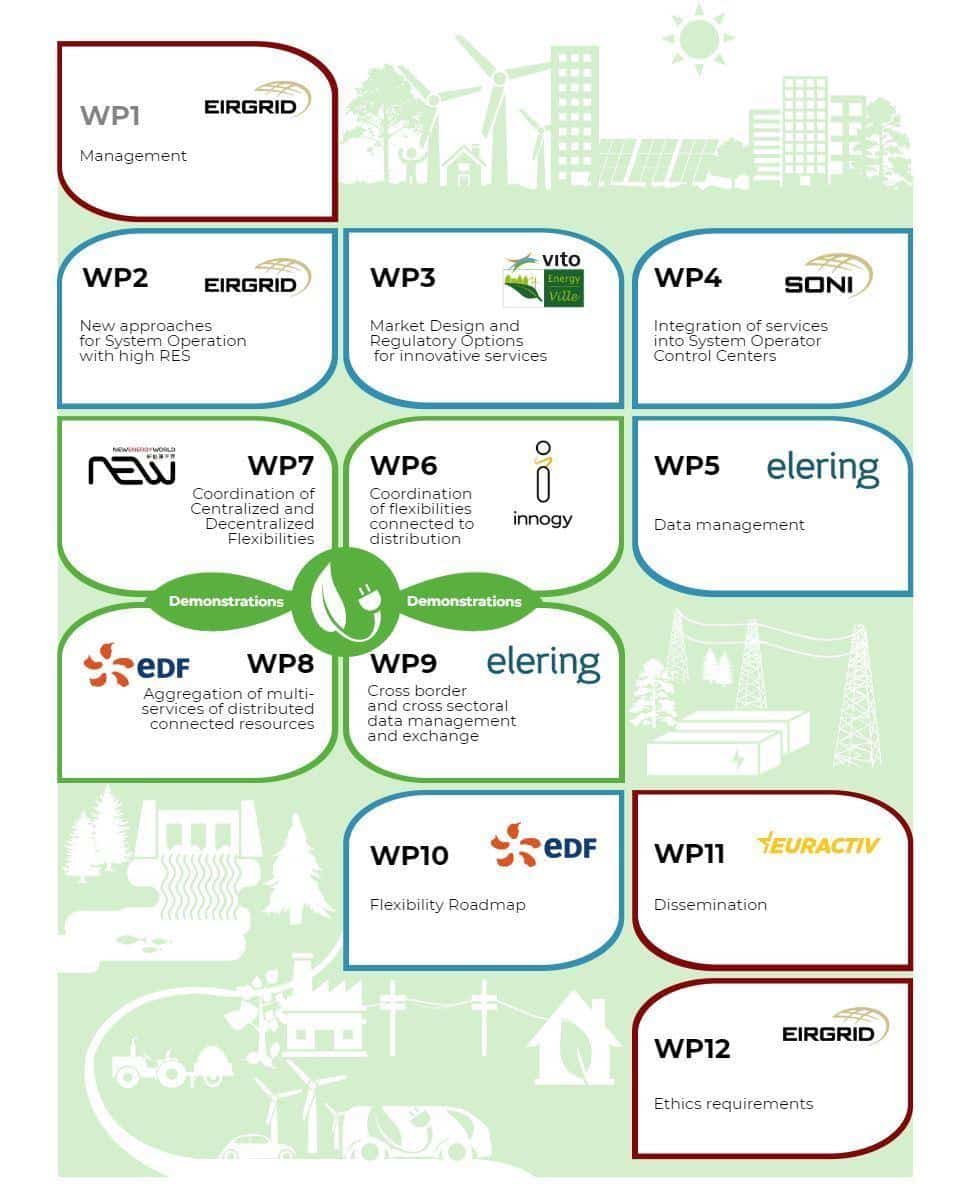EU-SysFlex
 EU-SysFlex stands for “Pan-European system with an efficient coordinated use of flexibilities for the integration of a large share of RES “. EU-SysFlex will develop new types of services that will meet the needs of the system with more than 50% of renewable energy sources. It will find the right blend of flexibility and system services to support secure and resilient transmission system operation.
EU-SysFlex stands for “Pan-European system with an efficient coordinated use of flexibilities for the integration of a large share of RES “. EU-SysFlex will develop new types of services that will meet the needs of the system with more than 50% of renewable energy sources. It will find the right blend of flexibility and system services to support secure and resilient transmission system operation.
EU-SysFlex will make an important contribution to meet the European Union (EU) world leading renewable energy source (RES) objectives. The results and later impacts of the project will be decisive for the cost-effective transformation of the electricity system by enhancing flexibility required to meet the desired world leading levels of RES, while maintaining the level of resilience that consumers and society have come to expect from the European electricity system.
A key characteristic of the transformation of the electrical system to integrate high levels of new RES is that existing conventional plants and the flexibility and services they provide will increasingly be displaced by new RES and technologies including wind, solar and battery storage. This raises two issues. The first is that the conventional plant is today’s service providers and their displacement leads to shortfalls in flexibility and needed services. The second is that the nature of the power system is transformed requiring a range of new or different technical shortfalls to be addressed. Failing to meet the required long term flexibility and system services will undermine Europe’s ability to enable the cost-effective transformation of the electrical system, and the additional costs which will be borne by the final consumers. Neither outcome is desirable.
EU-SysFlex proposes an innovative approach to drive this transformation. It will consider primarily the challenge of identifying from a technical perspective the required and needed flexibility and system services essential to meet the transformation of the European power system. This strategy will be embedded in the market design for flexibility so an appropriate balance of flexibility and system service provision technology can be achieved. Realizing this transformation will require advances along three axes; the identification of technical shortfalls requiring innovative solutions; the development of market design and regulation to provide incentives that will drive the development of the right balance of innovative solutions and finally, the development and demonstration of a range of innovative approaches and solutions to address these shortfalls. It is only by addressing these axes in an integrated framework that we will remove the barriers for reaching the EU RES objectives. Today a range of solutions are available to meet some of the flexibility and system service needs. Storage (large scale and decentralised), RES and flexible demand can play an important role in the transformed high RES world. The development of new approaches and technical solutions to unlock these flexibilities is contingent on a market design and regulatory framework that provides an environment to drive the investments required in the European context.
EnergyVille/KU Leuven will lead the development of the new dispatch and scheduling tools for the control centres of TSOs and DSOs. These tools will be used by the Polish transmission system operator PSE in their development of a Dispatch Training Simulator for a semi-realistic EU network with high penetration of renewable energy sources. This simulator is essential to prove scalability and replicability of the small-scale demonstrator results to the large-scale pan-European power system. The simulator will also be used for the essential training of the system controllers of the future in power systems with a large penetration of renewable energy sources.
Besides, EnergyVille will lead the analysis on new market designs and regulatory options for innovative system services. Examples of new market designs and regulatory options are, amongst others, dynamic and cross-border reserves or improved TSO-DSO coordination. These will be described qualitatively and studied quantitatively by means of detailed electricity market models.
